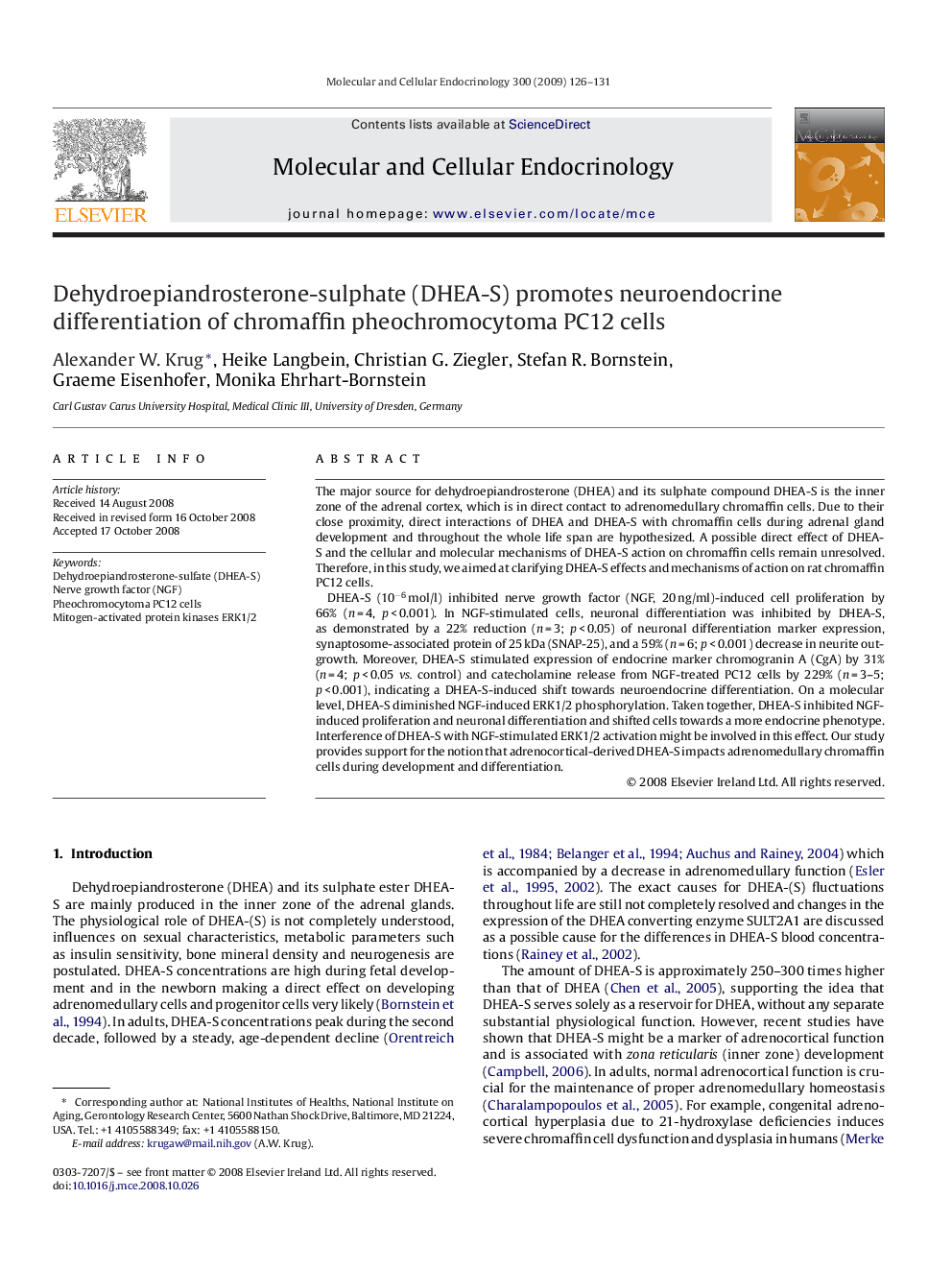| Article ID | Journal | Published Year | Pages | File Type |
|---|---|---|---|---|
| 8478159 | Molecular and Cellular Endocrinology | 2009 | 6 Pages |
Abstract
DHEA-S (10â6 mol/l) inhibited nerve growth factor (NGF, 20 ng/ml)-induced cell proliferation by 66% (n = 4, p < 0.001). In NGF-stimulated cells, neuronal differentiation was inhibited by DHEA-S, as demonstrated by a 22% reduction (n = 3; p < 0.05) of neuronal differentiation marker expression, synaptosome-associated protein of 25 kDa (SNAP-25), and a 59% (n = 6; p < 0.001) decrease in neurite outgrowth. Moreover, DHEA-S stimulated expression of endocrine marker chromogranin A (CgA) by 31% (n = 4; p < 0.05 vs. control) and catecholamine release from NGF-treated PC12 cells by 229% (n = 3-5; p < 0.001), indicating a DHEA-S-induced shift towards neuroendocrine differentiation. On a molecular level, DHEA-S diminished NGF-induced ERK1/2 phosphorylation. Taken together, DHEA-S inhibited NGF-induced proliferation and neuronal differentiation and shifted cells towards a more endocrine phenotype. Interference of DHEA-S with NGF-stimulated ERK1/2 activation might be involved in this effect. Our study provides support for the notion that adrenocortical-derived DHEA-S impacts adrenomedullary chromaffin cells during development and differentiation.
Related Topics
Life Sciences
Biochemistry, Genetics and Molecular Biology
Cell Biology
Authors
Alexander W. Krug, Heike Langbein, Christian G. Ziegler, Stefan R. Bornstein, Graeme Eisenhofer, Monika Ehrhart-Bornstein,
